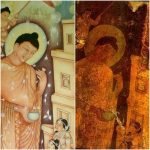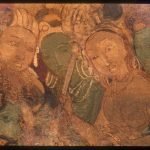What is common between the following?
Wave-particle duality in Physics, Polyclonal B-Cell response in Biology, the Japanese simile of circumstance that ordinary men often fail to understand a great man or his great work, and the famous quote by the genius Werner Heisenberg, “We have to remember that what we observe is not nature in itself, but nature exposed to our method of questioning”.
All these thoughts, theories, and research have a common root in the parable of the Elephant and the Blind Men.
Let us first go through the famous parable again, which is said to have its origins in ancient India.
A group of blind men heard that a strange animal, called an elephant, had been brought to the town, but none of them were aware of its shape and form. Out of curiosity, they said: “We must inspect and know it by touch, of which we are capable”. So, they sought it out, and when they found it they groped about it. In the case of the first person, whose hand landed on the trunk, said “This being is like a thick snake”. For another one whose hand reached its ear, it seemed like a kind of fan. As for another person, whose hand was upon its leg, said, the elephant is a pillar like a tree-trunk. The blind man who placed his hand upon its side said, “elephant is a wall”. Another who felt its tail, described it as a rope. The last felt its tusk, stating the elephant is that which is hard, smooth and like a spear.
This parable is called Andha-gaja-nyaya maxim in Jain texts.
To understand the depth of where this comes from, and how we understand and perceive the realities around us, let’s also look at the syadvada principle, from the context of a cooking pot:
- From a certain point of view, or in a certain sense, the pot exists
- From a certain point of view, the pot does not exist
- From a certain point of view, the pot exists and does not exist
- From a certain point of view, the pot is inexpressible
- From a certain point of view, the pot both exists and is inexpressible
- From a certain point of view, the pot both does not exist and is inexpressible
- From a certain point of view, the pot exists, does not exist, and is also inexpressible
The theory of syadvada in Jainism stems from the core doctrine of Anektavada, which talks about the complexities and multiple aspects of the ultimate realities.
This belief in the absence of absolute truth in any statement, or the presence of conditional acceptance of truth in multiple forms, allows us to view the realities of what surrounds us in a critically thought out manner with an appreciation of multiple perspectives. Such a view helps us see the societies around us in clearer perspectives, leading us to a path of happiness and knowledge. When we apply this knowledge across various domains, we see that various existing innovations in these domains get new meanings that can enhance the values of these innovations.
A deeper study of Anektavada helps us get newer understanding of the scientific realities around us, as it goes beyond the simplified explanation given in this article. Follow this space for a deeper dive into elevation of our consciousness.
















Add Comment